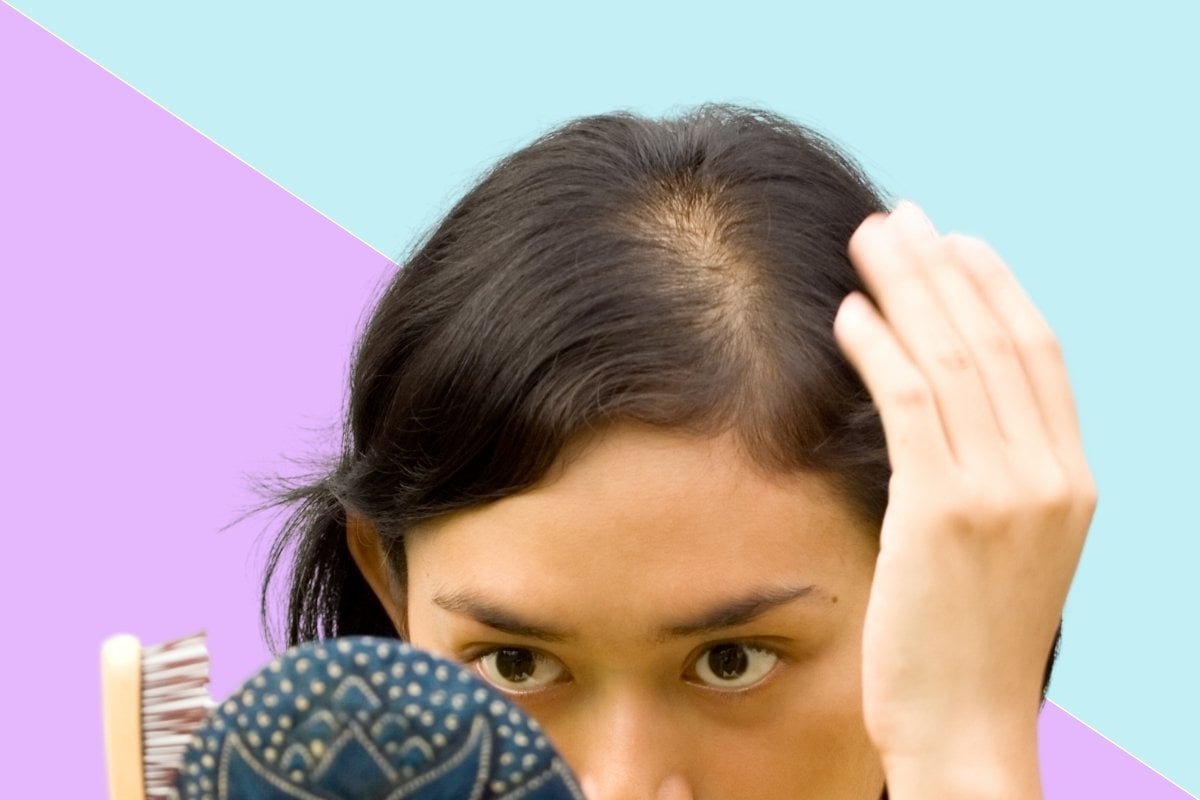
Mamamia's executive editor and host of the You Beauty podcast, Leigh Campbell, was a couple of months postpartum when she noticed her hair started to thin and break around the hairline.
"Working in the beauty industry, I take a lot of photos, I do a lot of videos, and I'm talking about how to have great hair, skin and nails. But privately my hair was going through that," she said. "So it's definitely tough. It definitely does play on your emotions and make you feel self-conscious about your appearance. As much as you know that it's common, it's normal, it's still a difficult thing to go through."
For Mamamia's Pop Culture Editor, Keryn Donnelly, hair loss was triggered by a period of extreme stress.
"I'd had a few things happening in my life that were causing me stress and anxiety. And I hadn't really dealt with it; I was just sort of pushing it down. And then I started to notice that my hair was falling out. I'd get in the shower, and I'd be washing my hair and big clumps of it were coming out," she said.
"I've always really liked my hair, and it has always been really big. And I thought, what if it just keeps falling out? So I was stressing out about that a lot, which was also adding to my stress level."
Watch: There are some benefits to life without hair...





























































































